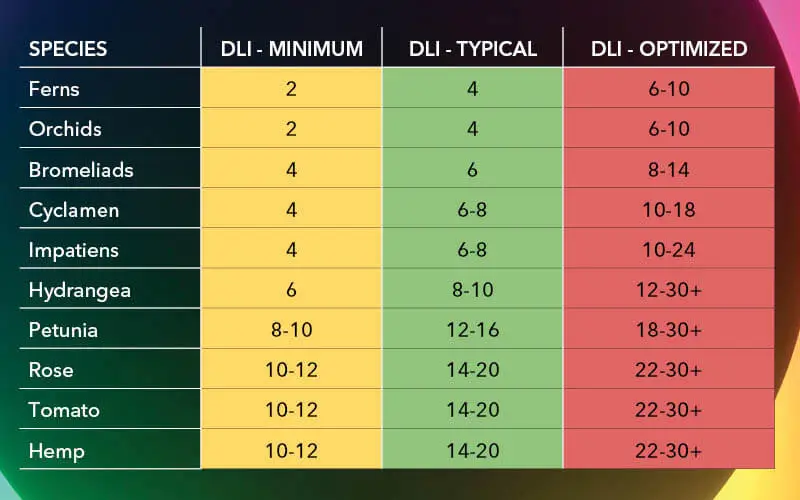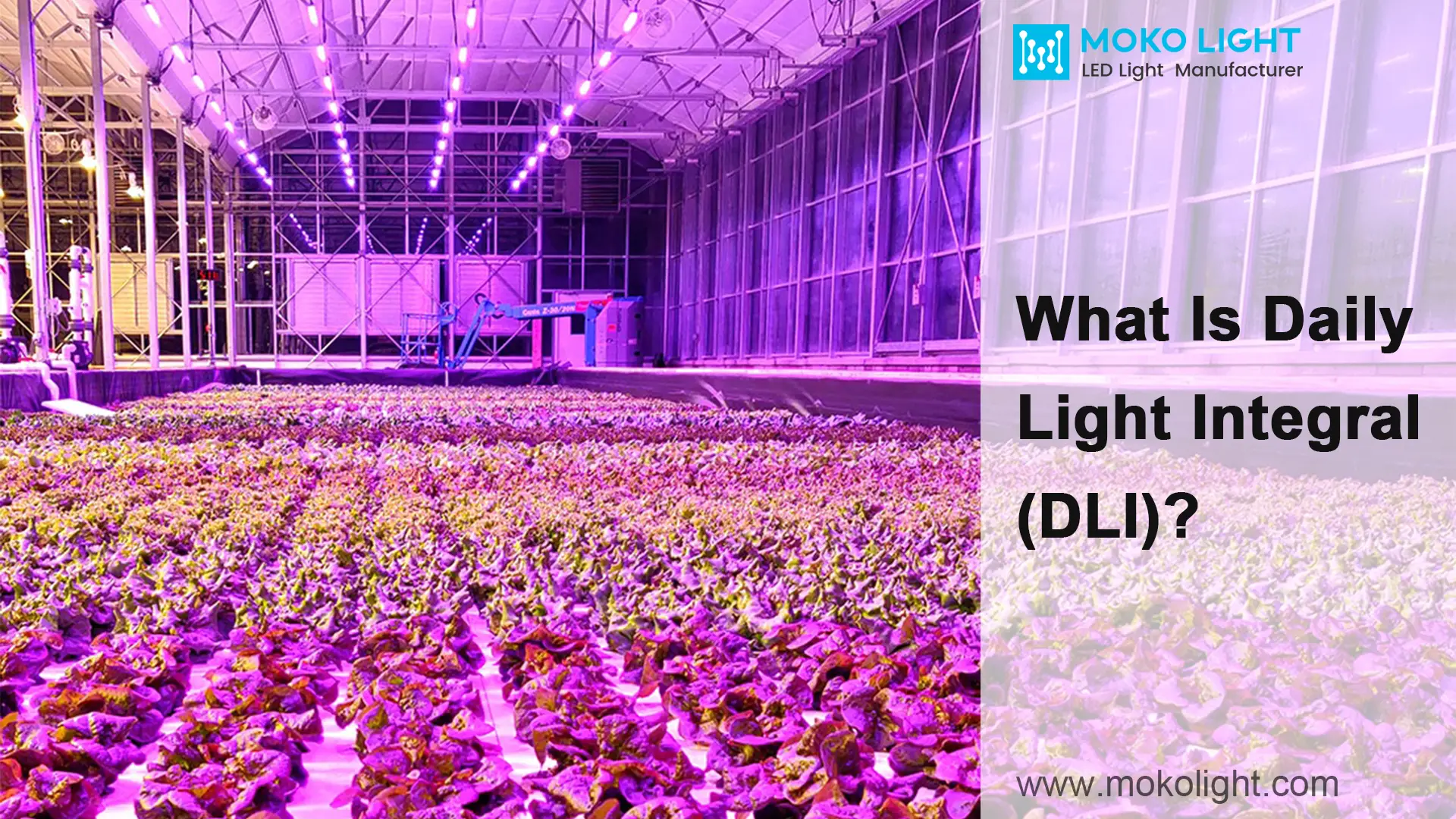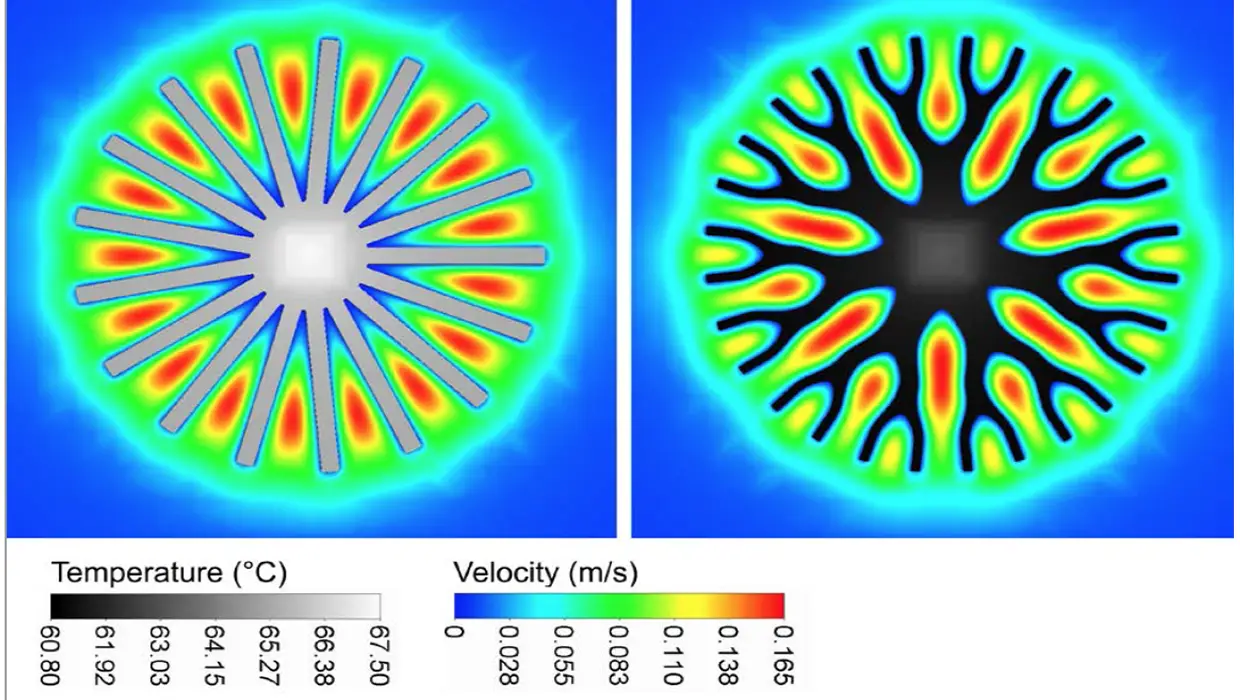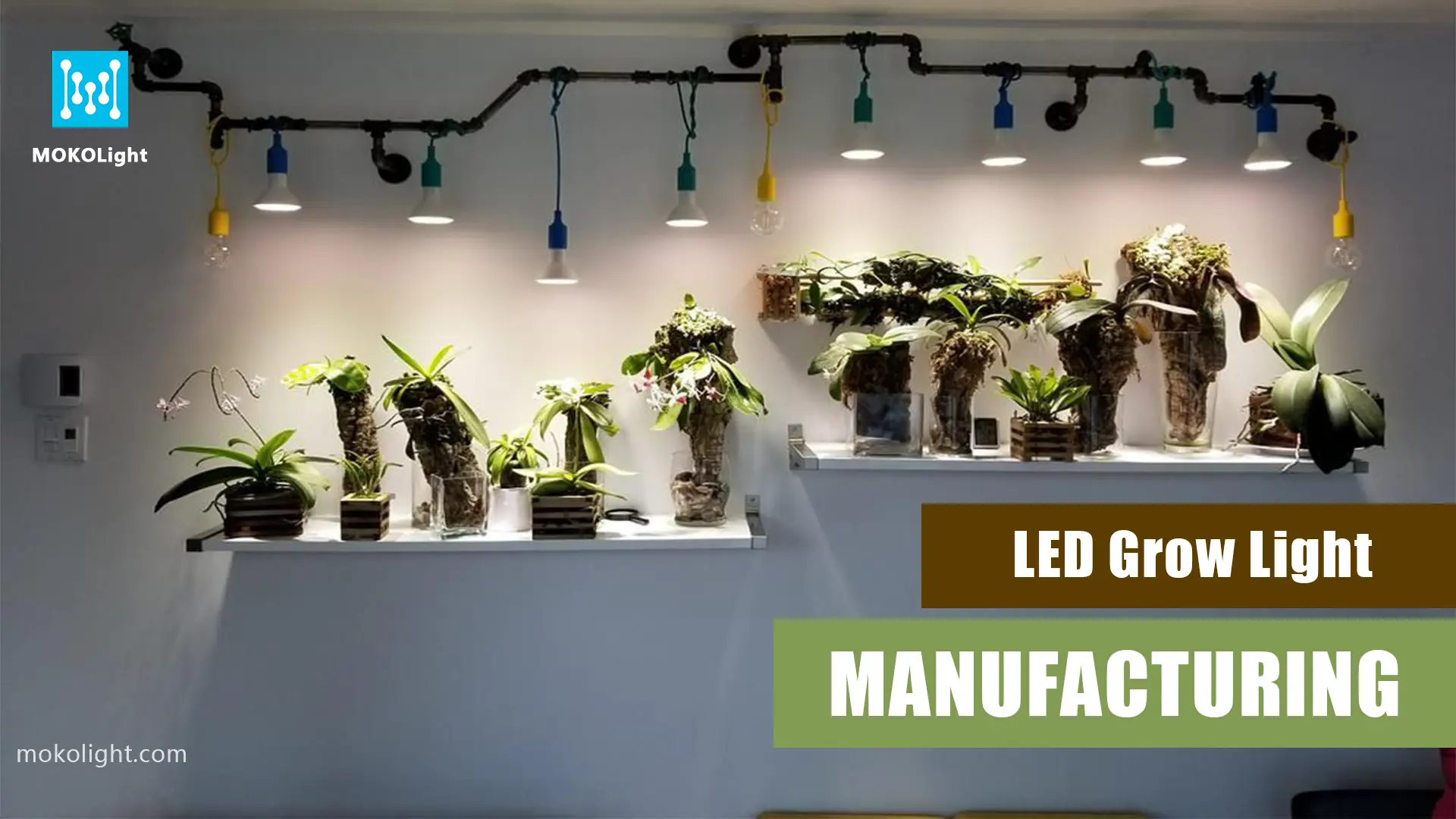Despite numerous advancements in greenhouse designs, achieving precise control over light remains a challenge in most greenhouse applications. Due to the unpredictable nature of weather and seasonal variations in solar radiation, it is challenging to consistently deliver an exact amount of daily light, even with the incorporation of supplementary lighting and shading systems.
Conventional methods of supplemental lighting primarily concentrate on extending the photoperiod and maintaining minimal light intensities. Although these methods are helpful, they do not provide a uniform amount of daily light. Ainsi, the Daily light integral (IDD) is created to calculate the total amount of light that is provided to a plant each day. Dans cet article, we will focus on DLI and how it helps your crop production.
What Is DLI?
To gain a better understanding of the daily light integral, it is essential to comprehend PPFD (Photosynthetic Photon Flux Density). PPFD measures the amount and intensity of PAR light landing on a square meter of crops per second, expressed in micromoles per square meter per second (µmol/m²/s). En termes plus simples, PPFD indicates the amount of PPF reaching each square meter of the crop at any given second.

With an understanding of PPFD, DLI can be viewed as the cumulative effect of PPFD over a 24-hour period. DLI represents the total amount of PAR light landing on a square meter surface or crop canopy in a day, measured in moles of light per square meter per day (mol/m²/d).
you can imagine the accumulation of “sand” falling from the top to the bottom of an hourglass but occurring over 24 heures. Each grain of sand represents a mole of light falling, landing, accumulating, and being absorbed into a plant within a square meter.
A PAR Light Meter’s DLI reading provides the measurement of the total amount of PAR received by crops in a day. The formula for calculating daily light integral est:
DLI = (PPFD)(Photoperiod)(3600) / 1,000,000
Units:
PPFD=mol m-2 s-1
Photoperiod=h
DLI=mol m-2 d-1
Why Is DLI Important?
Monitoring and recording the daily light integral received by crops is crucial as it has a significant impact on plant growth, développement, yield, and quality at each stage of their growth cycle. Growers can identify whether adjustments in light levels are needed by regularly assessing the DLI.
Through careful tracking of daily light integral during different seasons and plant cycles, growers can ensure consistent and uniform light levels throughout the year. This proactive approach enables them to optimize conditions for plant growth, leading to higher-quality and higher-yielding crops.
What Are the Advantages of Using DLI Control Applications?

Implementing DLI control applications in growing lights (dire, MokoLumière) offers several advantages:
Energy Cost Reduction
DLI control applications allow for precise management of the total amount of light plants receive each day. This minimizes the use of supplementary lighting equipment to only when necessary, resulting in reduced energy costs.
Improved Crop Yields
By precisely determining the amount of light received by plants, growers gain better control over the growth cycle. This increased control can lead to better crop production and improved overall results.
Predictable Outcomes
Daily light integral programs provide predictability in crop results. Minimum DLI thresholds have been established for various commercial crops, and falling below these levels can result in suboptimal growth and production. By maintaining DLI within the recommended ranges, growers can achieve more consistent and desirable outcomes.
Enhanced Quality
Managing daily light integral ensures better control over greenhouse lighting and regulates daily light exposure, resulting in consistent and stable plant quality.
Improved Timing
DLI control enables growers to optimize timing and achieve faster and more favorable results. Effectively managing daily light integral allows for more efficient resource utilization, informed decision-making, and improved product quality. DLI programs not only calculate and measure DLI at the crop level but also utilize algorithms to predict available natural light, serving as a basis for controlling supplementary lighting. This approach ensures a consistent daily light integral despite fluctuations in daily and seasonal weather conditions while maximizing the use of electrical energy and lamps.
What Is the DLI Upper Limit?
Multiple studies on different crops have demonstrated that the yield of crops increases proportionally with the daily light integral up to a certain upper limit. Beyond this limit, the rate of yield increase diminishes rapidly, and plants may experience stress. Interestingly, cannabis follows this general rule, although it exhibits some unique characteristics compared with other crops.
For various crops, the upper limit of DLI ranges differently. Lettuce, Par exemple, thrives within a range of 15-20, while tomatoes prefer a range of 35-40. Cannabis, cependant, behaves differently. Commercial cannabis cultivars display a uniform increase in yield that is directly proportional to DLI, reaching up to 45 IDD. Some strains can even tolerate higher daily light integral levels, atteindre 50 DLI or more. This can be attributed to the fact that many original cannabis strains evolved in equatorial mountain regions with naturally high light levels. If the daily light integral drops below 40, cannabis plants may exhibit subtle changes in flower structure and resin production, along with a proportional decrease in yield.
Donc, the optimal DLI range for flowering cannabis is considered to be between 40 et 50. To avoid shock when transitioning from the vegetative stage to the flowering stage, it is recommended to maintain veg DLI levels at a minimum of 75% of the flower DLI level.
What Are the Different Daily Light Integral Requirements for Your Crops?
The daily light integral significantly influences your plant characteristics like root and shoot growth, stem thickness, plant height, ramification, flower production, and blooming timing. These variables ultimately affect the yield and overall quality of the crop.
Use a lower DLI of 6 à 8 mol/m-2/day when propagating seedlings and young cuttings. In the case of transplants, flowering annuals, and small herbs, the DLI should increase to 10 à 12 mol/m-2/day. Certain shade-loving indoor plants and ornamentals have relatively low daily light integral requirements.
Research has provided insights into the daily light integral requirements of common crops.

The target daily light integral falls into three ranges: minimum levels for maintaining growth, typical levels for maximum efficiency, and optimized levels for maximizing growth and production. There is significant variability between species regarding their DLI requirements. Some cultivars can benefit from intense light levels, but it’s important to note that plants exposed to such conditions usually require additional water and fertilizer to support increased photosynthesis. In closed environments, supplemental CO2 may also be necessary.
Providing the appropriate DLI for a specific crop helps prevent issues associated with insufficient light, such as leggy or spindly stems, smaller or yellow leaves, brown edges, and lower leaf dryness. Fruiting crops, Par exemple, require a minimum of four to six hours of darkness. Excessive light can result in leaf, bud, and stem burns, the production of harmful free radicals, cell death, and damage to buds, fleurs, and leaves.
Optimizing the DLI for a particular crop enhances plant quality. Crops tend to develop more robust branches, thicker stems, abundant flowering, and more efficient roots when provided with the optimal DLI for their specific requirements.
How DLI Helps Your Crops
Understanding the Daily Light Integral allows you to customize your lighting system to meet the specific requirements of different crops. This becomes particularly crucial when supplementing sunlight in a greenhouse setting. Online DLI maps provide information on the average monthly sunlight intensity for particular states or geographic regions.
To determine the amount of supplemental lighting needed, you can combine the average sunlight intensity in your area with your crop’s DLI requirements. Let’s consider an example: you operate a greenhouse in central Michigan, and you plan to cultivate a winter crop with a DLI requirement of 24. According to the DLI map for Michigan, you can expect around 14 mol of sunlight per day in January. To achieve the target intensity, you would need your supplemental fixtures to provide an additional 10 mol of light.
You can calculate the required lighting duration if your lighting produces a Photosynthetic Photon Flux Density (PPFD) de 200 at the plants. Multiply the value by 277.8 after dividing the additional DLI required (10 mol) by the PPFD of the supplemental lighting array (200). The result in our example would be 10/200 * 277.8 = 13.89. Donc, you would need to keep the lights on for approximately 14 hours to obtain the required DLI for your crop.

The provided chart serves as a useful reference for comparing PPFD, IDD, and hours of light exposure. The left side of the chart displays PPFD values ranging from 100 à 1,000, while the top section represents hours of light exposure from 6 à 24. The numbers in the center indicate the resulting DLI achieved based on the combination of PPFD and hours of light.
By incorporating DLI control into your planning, you gain increased flexibility in designing and implementing lighting systems for plants. Understanding the concept of Daily Light Integral becomes a valuable tool for optimizing plant health and production across various environments, including outdoor, indoor, and greenhouse settings.
How to Increase the DLI Inside a Greenhouse?
Choose a covering material, such as glass or plastic, that has high light diffusion properties. This will help distribute light evenly throughout the greenhouse.
Optimize light reflection inside the greenhouse by selecting the appropriate greenhouse design and incorporating features like lacquered posts or a white ground cover. These elements can enhance the reflection of light.
Ensure that the roof covering, whether it’s made of glass or plastic, is regularly cleaned and in good condition. Au fil du temps, the diffuse effect of the covering can diminish, so proper maintenance is important.
Minimize obstructions that could block or impede light transmissions, such as hanging gantries, heavy greenhouse designs, and equipment like circulation fans, high-pressure fogging systems, or irrigation booms. These should be carefully placed to avoid shading and interference with light distribution.
Consider using permanent or complementary artificial lighting sources like HPS or LED to provide additional illumination as needed. These can help ensure optimal light levels for plant growth.
Choose LED Grow Lights at MokoLight
DLI plays a critical role in crop production, and MokoLight acknowledges its importance. We provide top-notch LEDs and light sensors, including options for monitoring PPFD and DLI. MokoLumière, with its knowledgeable staff, is always by your side to ensure optimal light conditions for your specific crops. The DLI control is available in our LED élèvent des lumières. With this application, you can better promote your crop yields while driving the cost down. Pour plus d’informations ou d’assistance, Contactez-nous tout de suite.




